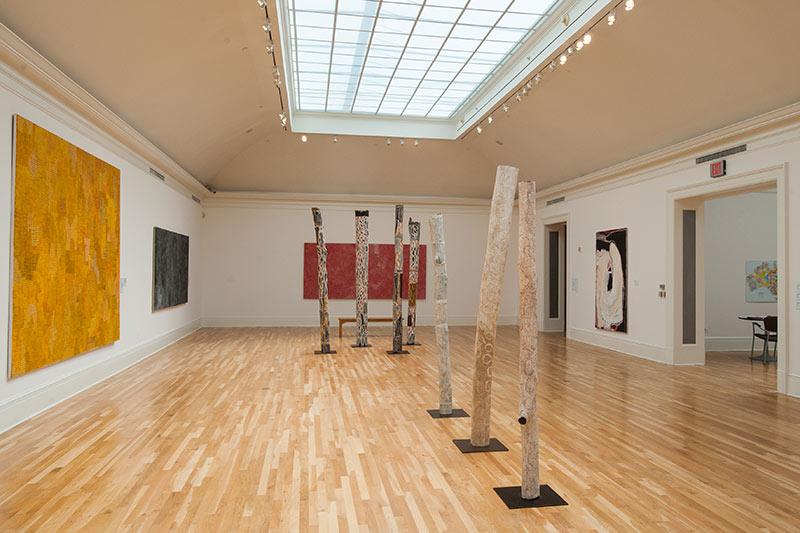Major touring exhibition of Australian Aboriginal art debuts at Tulane
The Newcomb Art Museum will celebrate its current exhibition Marking the Infinite: Contemporary Women Artists from Aboriginal Australia with a public reception on Wednesday, Sept. 7.
The landmark show will be on view for four months before launching a national tour to some of the most prestigious museums in the United States and Canada.
"It is an honor to share with the New Orleans community such a historically significant exhibition,” museum director Monica Ramirez-Montagut said. “These nine Aboriginal women create contemporary work not only of exceptional visual beauty, but also art that embodies the world’s oldest living cultural history.”
"It is an honor to share with the New Orleans community such a historically significant exhibition”
Monica Ramirez-Montagut, director of Newcomb Art Museum
The evening will begin at 6:30 p.m. with a talk by collector Dennis Scholl and exhibition curator Henry Skerritt, followed by a public reception from 7:30 to 9 p.m. The museum is located in the Woldenberg Art Center, just off Newcomb Place on Tulane’s uptown campus.
The exhibition features the works of artists from some of Australia’s most remote areas -- Regina Pilawuk Wilson, Angelina Pwerle, Carlene West, Lena Yarinkura, Nonggirrnga Marawili, Nyapanyapa Yunupingu, Yukultji Napangati and the late Gulumbu Yunupingu and Wintjiya Napaltjarri.
Their subject matter ranges from remote celestial bodies and indigenous flora to venerable crafts traditions and ceremonies. Steeped in ancient cultural practices, the works are specific to each artist. Yet they also speak to universal contemporary themes, with every mark invoking natural and cosmological cycles that bring perspective to the human condition.
The exhibition, which will be on view through Dec. 30, is drawn from the collection of Dennis and Debra Scholl, considered the most important private holding of Aboriginal Australian contemporary art in America.
A major catalogue accompanies the exhibition and features essays by leading experts in the field, including renowned Aboriginal curators Hetti Perkins, Tina Baum, and Cara Pinchbeck, as well as anthropologists Howard Morphy and John Carty.

